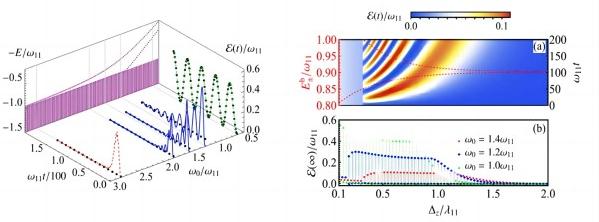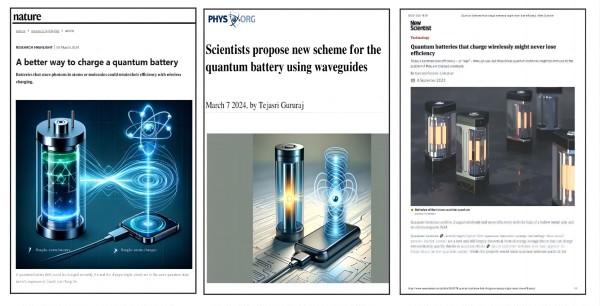Recently, the trapped ion physics research group at the Innovation Academy for Precision Measurement Science and Technology (APM) , in collaboration with Hubei University and Lanzhou University, made new progress in the theoretical research of quantum batteries. They proposed an anti-aging remote charging quantum battery scheme, and the related research findings were published in the top physics journal, Physical Review Letters.
In recent years, research on quantum batteries has been one of the most talked-about quantum technology issues, and the growing demand for energy has also stimulated interest in the study of transformative energy storage and supply devices. People expect to achieve new principle energy storage and supply devices called quantum batteries, which have smaller sizes, stronger charging power, higher charging capacity, and greater extractable work, by leveraging the characteristics of quantum systems and reconstructing thermodynamic and kinetic laws at the microscale, combined with experimental techniques for precise detection and manipulation at the quantum bit level. Although quantum batteries have made rapid progress in recent years, their implementation and application still face two major challenges: one is the aging problem of quantum batteries, which is caused by the spontaneous dissipation of stored energy due to decoherence induced by the environment; the other is that quantum batteries generally adopt coherent coupling between the battery and the charger for charging, but this charging scheme is sensitive to decoherence and the increase in the distance between the battery and the charger, making it prone to failure.
Addressing these two challenges, the research team proposed a novel quantum battery scheme: two two-level atoms playing the roles of charger and quantum battery are placed in a rectangular hollow metal waveguide, with the distance between the charger and the quantum battery far exceeding the effective distance for dipole-dipole coherent coupling. The study found that by utilizing the non-Markovian decoherence dynamics induced by the vacuum electromagnetic field in the waveguide as a common environment, sustained energy exchange between the charger and the battery can be achieved without being affected by aging. This process enables non-contact, long-distance “quasi-wireless” charging of the quantum battery, while also demonstrating the constructive role of decoherence effects in establishing coherent interconnects between the battery and the charger. This effectively addresses the issues of energy dissipation and distance limitations in quantum batteries. This work has important theoretical guiding significance for further promoting the physical realization of quantum batteries.

This work has received widespread coverage from international science and technology media.
The study was published in the academic journal “Physical Review Letters” under the title of “Remote charging and degradation suppression for quantum battery.” Associate Professor SONG Wanlu from Hubei University is the first author of the article, and Professor ZHOU Bin from Hubei University, Researcher YANG Wanli from APM, and Professor AN Junhong from Lanzhou University are the joint corresponding authors.

This work was funded by the National Natural Science Foundation of China, the Hubei Provincial Innovation Team Project, the Hubei Provincial Outstanding Youth Fund, and other projects.
